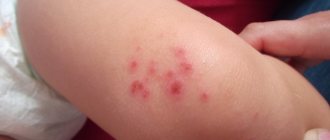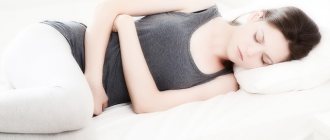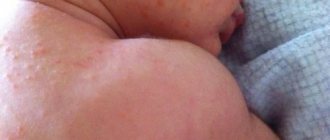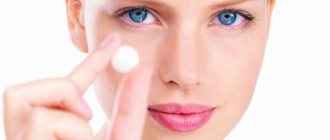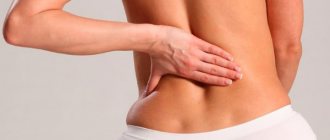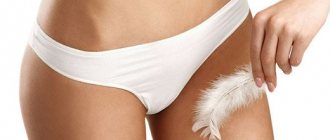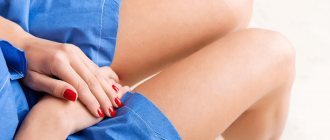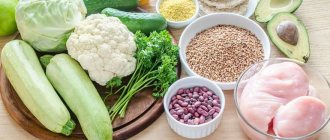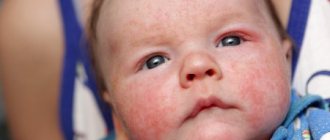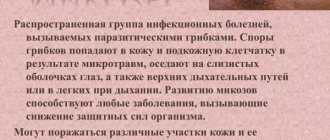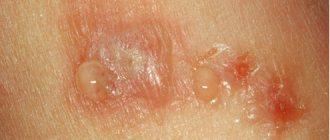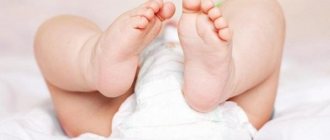Inflammatory diseases of the penis are diseases related to two areas of medicine - urology and sexology. Every urologist encounters this problem, from outpatient specialists to clinical department workers. The male groin area can be affected by a wide range of infectious, inflammatory, and neoplastic dermatoses. Many common infections affect the genitals only in exceptional cases, while others occur in this area very often.
Dermatitis in the groin area
Localization of atopic dermatitis
Atopic dermatitis or diffuse neurodermatitis occurs and manifests itself differently, for example, in severe winter there is a severe relapse, but in warm weather it does not manifest itself at all.
An itchy rash in adults and children can be localized in different parts of the body, spreading more and more. In children, redness is mainly localized in the popliteal cavity, on the arms and legs.
Atopic dermatitis in adults
Cases of neurodermatitis in the adult population range from 5 to 10%. At the same time, dermatitis rarely occurs as an independent disease; it is accompanied by additional ailments, such as hay fever and rhinitis.
Women are more likely to suffer from atopic dermatitis than men. People who suffered from dermatitis in early childhood experience similar symptoms that occur during the season of exacerbations.
Neurodermatitis can occur for the following reasons:
- Genetic predisposition;
- Increased sensitivity of the skin;
- Violations of the epidermis in terms of biochemistry and functional properties;
- Illnesses are provoked by severe stress and emotional tension;
- Violation of daily nutrition;
- Deteriorated environmental situation.
The disease can manifest itself as follows:
- Localized rashes are accompanied by severe itching , worsening at night;
- Everyone experiences dry skin and flaking;
- In the acute phase, rashes appear that have a dense structure.
All these phenomena require urgent consultation with a treating specialist.
Photo of what atopic dermatitis looks like in adults:
Diagnosis of atopic dermatitis in adults includes the following procedures:
- Consultation with an allergist , he will conduct a thorough examination of the patient and interview him;
- After these procedures, tests are prescribed , an allergen test, a faidatop test, after which a presumptive diagnosis is made;
- In some cases, consultation with a number of specialists may be required , such as a dermatologist, endocrinologist, gastroenterologist;
- This is followed by a secondary consultation with an allergist, he will interpret the tests in detail and conduct an additional examination. When the diagnosis is confirmed, complex therapy is prescribed.
Symptoms of fungal diaper dermatitis in a child
Fungal dermatitis is one of the types of diaper dermatitis, and develops accompanied by the following manifestations:
- red spots, prickly heat in skin folds;
- excessive restlessness, constant crying, attempts to scratch the affected areas;
- if the perineum is affected, the child experiences anxiety, crying during or after urination;
- the appearance of blisters, abrasions, and a cheesy coating.
The age when the disease can begin to develop is 6-8 months, and the baby can become infected at any period of infancy, starting from birth. Experts distinguish 3 stages of the disease:
- initial – minor damage to the skin;
- marginal irritation - occurs due to friction of the skin against clothing, a diaper, a diaper, and manifests itself in the form of a rash;
- perianal localization - dermatitis forms in the anal area, thus causing particular discomfort during the bowel and bladder bowel movements of the baby.
Treatment of atopic dermatitis in adults
Getting rid of this disease is carried out in a complex manner and involves the use of drug therapy, careful adherence to diet and the formation of a positive emotional environment.
Drug treatment
The following are worth noting as effective antihistamines for neurodermatitis:
- Allertek - can eliminate itching on inflamed skin. Adults take 1 tablet 3-4 times a day. Cost from 150 to 350 rubles ;
- Ketotifen - gives a noticeable therapeutic effect for neurodermatitis after 1.5 months of continuous use. Adults take 1 tablet 2 times a day. Average cost 50 rubles ;
- Clarotadine is aimed at eliminating allergy symptoms. Adults are prescribed 1 tablet 1 time per day. While taking it, it is prohibited to engage in risky activities associated with a high level of concentration. Cost from 50 rubles .
Allertek Ketotifen Clarotadine
The following agents are worth noting as steroid compounds:
- Hydrocortisone - effectively relieves signs of inflammation. Apply a thin layer to the affected area 3 times a day. Duration of use is 7 days. Cost from 60 to 100 rubles ;
- Betamethasone - relieves inflammation of the skin and all local consequences of neurodermatitis. Apply a thin layer to the affected area of the skin 2-6 times a day until clinical improvement, then apply 1-2 times a day. The average cost of the product is 140 rubles ;
- Flucinar - reduces itching and inflammation of the skin. Apply a thick layer up to 3 times a day. The average cost is 370 rubles .
Hydrocortisone Betamethasone Flucinar
In addition, non-hormonal formulations of local action are used:
- Bepanten - helps get rid of red spots, heals the skin. Apply a thin layer 2 times a day. Average cost 500 rubles ;
- Panthenol - quickly restores affected skin areas. Apply the product to the affected areas 2 times a day. Average cost 200 rubles ;
- Exoderil - antifungal cream perfectly relieves inflammation. Apply the cream to the affected areas every day for 2-4 weeks. The average cost is 450 rubles .
Bepanten Panthenol Exoderil
To normalize the intestinal microsphere, use:
- Hilak forte - effectively regulates intestinal microflora. Take 40-60 drops 3 times a day. Average cost 300 rubles ;
- Linex - normalizes the condition of the intestines. Take 2 capsules daily. Average cost 320 rubles ;
- Biovestin-lacto - successfully eliminates signs of dysbiosis and cleanses the body. Use 12 ml per day. The average cost is 390 rubles .
Hilak forte Linex Biovestin-lacto
Folk remedies
When choosing traditional methods of getting rid of neurodermatitis, it is worth remembering that they are used in combination with traditional methods of therapy.
Among them, the following recipe is most often used:
- Decoction of dried laurel - 2 pcs. bay leaves, 200 ml water. The leaves of the plant are steamed with boiling water and left for 6 hours. The finished expressed composition is drunk in 2 doses. No side effects were found. Duration of treatment: 4 days;
- Healing lotion - 1 tbsp. l. Veronica officinalis is steamed in 1 tbsp. boiling water The expressed lotion is wiped over the affected areas of the skin. The composition has no harmful effects; it can be applied up to 6 times daily. Course duration 1 week;
- Compress made from raw potatoes - potatoes are grated, the juice is squeezed out, wrapped in clean gauze, and applied to the affected area. Course duration – 1 week;
- Natural ointment to relieve itching - 1 tbsp. l. pharmaceutical chamomile, fireweed, boiled in 500 ml of water, after boiling the solution, add 5 g of oil, 2 tbsp. l. Add 10 g of glycerin to the cooled composition. The course of treatment is 1 month.
Diet and treatment and prophylactic regimen for atopic dermatitis in adults
To reduce the contact of atopic with the allergenic environment to a minimum, special conditions are created:
- Eliminate sources of dust and pollution - bedding made of synthetic fillers, floors without fleecy carpets, absence of animals in the house;
- Cleaning is carried out using hypoallergenic products and special devices;
- Avoid places where smokers gather to stabilize the condition.
During this time, it is important to adhere to a hypoallergenic diet:
- Eliminate allergenic foods from the diet, such as chocolate, eggs, citrus fruits, smoked foods and heavy marinades;
- Cook gluten-free porridges in water;
- Eat more fruits and vegetables with fiber to normalize intestinal activity, not red;
- To reduce the load on the liver, use lean meats and sea fish;
- Lightweight fermented milk products such as low-fat cottage cheese, kefir and natural yogurt without additives.
How to treat inflammation
Dermatitis on the penis implies a comprehensive approach to such a delicate disease. When prescribing, the reasons for the development of infection, the form of the disease and its severity should be taken into account.
Ointments and tablets
When treating dermatitis on the penis, the most important dosage forms are ointments and creams for external use. These products sometimes contain antibiotics. To relieve inflammation, an ointment containing salicylic acid or zinc is often prescribed.
When inflammation is caused by other diseases (venereal), therapy should include not only local remedies, but also those antibiotics that should eliminate the infection that became the root cause.
The allergic form requires the prescription of antihistamines: Loratadine, Zyrtec, Suprastin, Tavegil. If a weakened immune system is to blame, then immunomodulatory drugs are prescribed - Amiksin, Viferon, Interferon, Kagocel.
When the infection is caused by a fungus, antimycotic ointments or oral medications are prescribed: Zalain, Clotrimazole, Ketoconazole, Terbinafine. In advanced cases, it is necessary to take tablet medications - Itraconazole, Nystatin or Fluconazole.
Dermatitis on the head of the penis can be a consequence of genital herpes, an infectious disease. The rash is accompanied by pain; many vesicles are formed, which are filled with yellowish or transparent exudate.
Irritation on the skin of the penis often causes very severe pain. These symptoms can be minimized with Bepanten (cream or ointment). It is necessary to treat the affected areas with ointment twice a day. It is used for dry areas, and cream for weeping areas.
What does traditional medicine offer?
Regarding this method of treating dermatitis on the penis, you should definitely talk to your doctor; self-medication is prohibited. Folk remedies are an addition to official medicine, and not a panacea for the disease. Among the recipes used for this disease are the following:
- Oak bark. This decoction is used for both baths and rubdowns. To prepare, take 100 g of raw material, which is poured with a liter of boiling water and placed in a water bath. After 20 minutes, the broth is removed and wrapped for 2 hours. Then it is filtered and the affected areas are wiped with a cotton pad or swab.
- Chamomile officinalis. In this case, you need to take 2 tbsp. l. dry leaves. They are poured with 0.5 liters of boiling water and boiled for 15 minutes. They also infuse for 2 hours. The infusion is used to wipe both the penis and the groin area.
- To lubricate the affected skin, use vegetable oil, which must be kept in a water bath for at least 20 minutes and cooled. The product is applied to the head of the penis and the foreskin is treated.
- You can almost instantly relieve irritation by applying aloe juice to the skin of your penis.
A similar effect will be provided by decoctions of calendula, nettle, burdock, mint and plantain, linseed and tar oil after a water bath, as well as a mixture of salicylic acid and petroleum jelly. The use of animal fats in any formulation is strictly prohibited.
Skin care
With penile dermatitis, hygiene is very important. Only tar or baby soap is used, since perfume fragrances do not have the best effect on the skin. In order not to provoke a relapse of the disease, a separate towel is used for the intimate area.
It is important to thoroughly dry problem areas. If the patient has intense sweating, it is recommended to treat the entire groin area with powder.
To soothe itchy skin, use oatmeal baths. If the rash is weeping, then using medicinal clay will help alleviate the condition.
Atopic dermatitis in children
Most often, signals indicating the development of atopic dermatitis occur in children under the age of one year, in adolescence.
During a child’s life, there are 3 forms of manifestation of this disease:
- Infant;
- Children's;
- Teenage.
Atopic dermatitis is chronic. In childhood, the clinical picture is most vivid.
Children in 75% of cases suffer from this disease under the age of one year, children under 7 years of age are susceptible to the disease in 90% of cases.
Leading allergists note the following principles for the development of atopic dermatitis in children:
- Bad heredity , in which case allergic diseases were observed in the child’s parents, grandparents;
- Unfavorable ecology associated with the rapid growth of megacities: soil and air pollution, the use of products containing GMOs;
- Improper nutrition of the mother during pregnancy and lactation;
- Artificial feeding of babies can also cause dermatitis, because not a single adapted formula can compare with natural mother's milk;
- Frequent viral diseases can lead to a non-standard reaction of the immune system;
- Overfeeding a child , which results in protein oversaturation of the body;
- Immaturity of the digestive system of children , in these cases dysbacteriosis may be observed;
- Lack of zinc and unsaturated fatty acids , vitamins B, A;
- A large amount of salt or sweets can also trigger the development of atopic dermatitis;
- Stress in children can also cause acute atopic dermatitis.
Clinical signals indicating neurodermatitis in children:
- Severe peeling of the skin;
- Itching, worse during night sleep;
- Weeping scratched wounds;
- Bright skin pattern in the affected areas;
- Rough affected areas of skin.
Secondary signs of neurodermatitis are the baby’s nervousness and sleep disturbances. When combed areas become infected, the body temperature rises in babies.
Photo of what atopic dermatitis looks like in children:
To identify neurodermatitis in a child, a consultation with a pediatric dermatologist, immunologist, or allergist is required.
Diagnosis of the disease is carried out as follows:
- Performing a skin test with allergens by scarification – from 5 years of age;
- Performing a prick test to identify indirect allergic reactions - it is carried out from 5 years of age;
- A blood test to identify allergens is done from 6 months;
- Intradermal testing with bacterial allergens is also carried out from 5 years of age.
Complications of atopic dermatitis in children
When scratching the skin, susceptible integuments are injured, and violation of their integrity leads to infection and the development of fungal infections.
A common complication of dermatitis is bacterial infections of the affected areas of the skin. As a result, blisters form on the skin filled with clear liquid.
Negative consequences of dermatitis can be fungal infections caused by yeast-like fungi. Young children may develop oral thrush.
ethnoscience
Treatment with folk remedies is often effective, but it must be coordinated with a doctor. Self-medication can be harmful, especially considering that genital dermatitis is often caused by diseases that pose a danger to human health.
A disease that is not taken seriously and neglected sometimes leads to the need for treatment with great difficulty, discomfort and material costs. This applies not only to treatment with folk remedies, but also to self-medication with pharmaceutical medications.
- You can ease your well-being by taking a bath to which a decoction of oak bark is added. Pour 100 g of bark with a liter of water and boil for about 20 minutes. Then leave for 4-5 hours, strain and add to the bath. The duration of the procedure is 10-12 minutes. You can moisten cotton pads with the liquid and wipe the affected areas of the skin.
- Decoction of medicinal chamomile. Two tablespoons of dried raw materials should be boiled in 0.5 liters of water for about 15 minutes, then left for 2 hours and wiped over the skin of the genitals and groin.
- You can lubricate the penis with sunflower oil, previously boiled in a water bath for 20 minutes. The cooled oil is applied to the inflamed glans and foreskin.
To prevent the appearance of dermatitis, as well as speed up its treatment, it is important to maintain personal hygiene, lead a healthy lifestyle, and avoid unprotected sex and stress.
source
Treatment of atopic dermatitis in children
To rid a child of the manifestations of dermatitis, medication, folk, and local therapy will be required.
Drug treatment
First, a five-day regimen of effective antibiotics is prescribed, including:
- Erythromycin - aimed at preventing bacterial infections, the medication is approved for children from 3 months, taken orally 20-40 mg 2-4 times a day. The average cost of a medicine is 80 rubles ;
- Doxycycline has an effective bacteriostatic effect. The drug is approved for children over 8 years of age. Take 4 mg per 1 kg of weight. Price from 20 rubles ;
- Azithromycin - leads to the death of various bacteria. Can be taken from 6 months. The average dosage depends on the indication - 500 mg once for 3 days. Price from 30 rubles ;
- Flucloxacillin - has a positive effect in the treatment of dermatitis, allowed from 6 months. Children under 2 years of age take 0.0625 mg daily one hour before meals. Children from 2 to 10 years old are prescribed 0.125 mg 4 times daily. Cost from 80 rubles .
Erythromycin Doxycycline Azithromycin Flucloxacillin
Antihistamines will help reduce itching at night:
- Cetrin - helps to quickly relieve signals of atopic dermatitis. Allowed from 2 years. Children under 6 years old are prescribed ½ tablet before bedtime, over 6 years old - 1 tablet 1 time daily. Average cost 170 rubles ;
- Zodak - effectively eliminates allergy symptoms. The drug is approved from 1 year. Children drink it in the form of drops, 5 drops for 2 years every day with water. Therapy from 5 to 7 days. Average cost 210 rubles ;
- Erius - for children used in the form of syrup from 6 months. It gives the maximum therapeutic effect in the treatment of allergies. Daily value for babies from 6 months. up to 5 years old is 2.5 mg, from 5 to 11 years old - 5 mg, from 11 to 15 years old - 10 mg at a time. The cost of the product is from 600 to 800 rubles ;
- Desal - in the form of syrup, allowed from 1 year. It aims to suppress the symptoms of atopy. Children from 1 to 5 years old are allowed to take 1.25 mg, children from 6 to 11 years old - 2.5 mg, from 11 to 15 years old - 10 mg each. The average cost is 320 rubles .
Cetrin Zodak Erius Desal
Glucocorticosteroid drugs effectively cope with the signals of dermatitis.
The most commonly prescribed drugs are:
- Prednisolone – has an antihistamine, immunosuppressive effect, allowed from 1 day of life. Children are prescribed 2 mg per 1 kg of body weight 3-4 times a day. The cost of the medicine is from 50 rubles ;
- Lorinden A - has an antiallergic, antipruritic effect, used from 6 months. Apply a thin layer. The price of the drug is from 350 rubles ;
- Dexamethasone - helps to effectively fight skin inflammation, allowed from 6 months. At the initial stage it is up to 12 mg, with a subsequent reduction in volume to 2.5 mg. We divide the daily norm by 2-3 times. The cost of the drug is from 40 rubles .
Prednisolone Lorinden A Dexamethasone
To improve intestinal activity, use:
- Bifidumbacterin - helps restore intestinal microflora and is used to prevent dysbacteriosis. Allowed from birth. Children under one year old drink a sachet three times a day, from 1 to 3 years old - a sachet 4 times a day, from 3 to 12 years old - 2 sachets 3 times a day. From 12 years old – 2 sachets 4 times a day. Cost from 20 rubles ;
- Bifiform - will help populate the intestines with beneficial bacteria to improve microflora. In powders it is allowed from 1 year. Take the drug with meals in an amount of 0.5 g, regardless of the child’s age. Cost from 520 rubles ;
- Acipol - aimed at regulating intestinal microflora. Can be taken from 3 months. Babies aged 3 months and older. up to 3 years, take 1 capsule 3 times a day, dissolved in milk. Older children take the capsule 3-4 times a day 30 minutes before meals. The average cost is 250 rubles .
Bifidumbacterin Bifiform Acipol
Regular glycine is used as a sedative in therapy.
Children are also prescribed ointments that do not contain hormones:
- Fenistil gel is an effective local anti-allergenic agent, approved from the first days of life. The drug is applied to the affected skin and allowed to be absorbed. Average cost 450 rubles ;
- Zinc ointment - effectively relieves inflammation, applied to the affected area 3-4 times a day. Allowed from 1 month. Cost up to 40 rubles ;
- Radevit - has dermatoprotective qualities, promotes skin regeneration. Can be applied from 2-3 months. The average cost is 350 rubles .
Fenistil gel Zinc ointment Radevit
In addition, compositions that have a wound healing effect are prescribed:
- Actovegin - activates metabolism in tissues. Can be taken from birth. Prescribed 20 ml to 200-300 ml of the main solution. In tablets 2-3 pcs. per day, the duration of treatment is 6 months. Average cost 560 rubles ;
- Methyluracil ointment is a means for local skin restoration. Approved from birth. You need to apply the products 3-4 times a day. The duration of the procedure is 3 weeks. Cost from 65 rubles ;
- Dexpanthenol ointment is a local remedy for normalizing cellular metabolism. The composition is allowed from birth. The average cost is 115 rubles .
Actovegin Methyluracil Dexpanthenol
Folk remedies
To improve the general condition of the skin in children, the following recipe is used:
- Cucumber juice effectively relieves inflammation. We squeeze it out of 1 fresh vegetable and apply it to the child’s inflamed skin every 2 hours. For each procedure we squeeze out fresh juice. Duration of reception is 1-2 days;
- A mixture of chamomile and flaxseed oil will help relieve itching and soothe skin irritation. 1 tsp. Mix dry chamomile with 100 g of flax oil, heat in a water bath for 20 minutes. Apply the finished cooled composition 3 times a day. Allergic reactions are possible. The course of treatment is 2-3 days;
- Pumpkin juice is an effective remedy in the fight against atopy in children. Squeeze the juice out of the pumpkin pulp and rub it on the affected areas of the skin. We repeat the procedure every 2 hours. Treatment period is 3 days.
Diet for atopic dermatitis and treatment and prophylactic regimen in children
The main goal of a gentle nutrition program for neurodermatitis is to reduce the load on the child’s intestines and eliminate allergenic foods from the diet.
The use of seasonings during cooking is unacceptable; only a little salt is allowed. Flour and sweets are excluded from the diet.
It is advisable to use lean meats, and peel raw fruits and vegetables. At the same time, many experts advise combining diet therapy with taking important vitamin complexes to maintain the immune system.
Treatment of dermatitis in the groin
Treatment is recommended based on clinical manifestations and immediate cause. Therapy involves influencing the provoking factor and symptoms. For example, if the cause is genital herpes, then drugs are prescribed to treat it, as well as symptomatic remedies that help relieve negative symptoms.
Fact: dermatitis on the penis is not always an independent pathology, so differential diagnosis is carried out to establish a diagnosis. This is based on the fact that the impetus for skin manifestations can be serious diseases of the genitourinary system, impaired renal function, and even respiratory diseases that cause complications.
Dermatitis should be treated locally and systemically. The patient is prescribed the following medications for oral administration:
- Immunostimulants and immunomodulators.
- Antibacterial agents.
- Antihistamines.
- Sedative medications.
- Antibiotics (if there is a bacterial infection).
To relieve severe itching, it is recommended to take medications - Suprastin, Tavegil, Claritin, Loratadine. To reduce nervous tension, use light sedative medications - Motherwort tincture, Persen, Glycerin.
Local treatment has the following features:
- In the presence of a fungal infection, use antifungal creams and ointments - Clotrimazole;
- If there are rashes with pus, then the use of local antibacterial agents is required;
- To stop the inflammatory process, Zinc ointment is applied to the penis - it has anti-inflammatory properties.
Atopic dermatitis in infants
Young children are most often susceptible to neurodermatitis. You can notice the first signs of the disease already in the first month of the baby’s life. At each age, the disease manifests itself differently, with periods of acute outbreaks followed by times of complete dormancy.
Many allergists have recognized facts that increase the risk of developing atopy in babies:
- Hereditary disposition . The disease is transmitted at the genetic level;
- Congenital or acquired immunodeficiency can lead to the development of atopy;
- The presence of chronic gastrointestinal diseases . Children with pathologies of intestinal tract development are at risk of developing atopy;
- Incorrect feeding . Often, instead of breast milk, the child receives adapted formulas, which can also lead to the development of neurodermatitis;
- Early introduction of complementary foods can also lead to the appearance of unpleasant red spots in the baby;
- Contact with aggressive chemicals can provoke neurodermatitis in the affected areas.
The following signals are typical for atopy in children:
- The appearance of red spots on the baby’s face, popliteal fossa, inner bends of the elbow joints;
- Severe itching in the affected areas;
- Cracks, crusts and severe peeling of the affected skin.
Photo of what atopic dermatitis looks like in infants:
In this case, you need to contact your pediatrician, who will refer your child to an allergist-immunologist.
The diagnostic process consists of the following stages:
- After a thorough physical examination, an important part of the diagnosis follows - special phenomena to identify the allergen;
- For this purpose, a general blood test and serological analysis are taken from the baby.
After confirmation of the diagnosis, therapy is prescribed.
Types and degrees of dermatitis on the genitals
Genital dermatitis is classified according to the causes and nature of the inflammatory processes. This makes it easier to make a diagnosis and select the optimal drugs for treatment. In dermatological practice, the following types of dermatitis are distinguished:
- Seborrheic. It occurs as a result of damage to the skin by pathogenic fungi of the genus Malassezia. A fungal infection appears as scaly red patches and severe itching in the groin area. The lesions are localized in the area of the anus, pubis and genitals. The disease is characterized by a chronic course with periods of exacerbation and remission. Relapses occur in the spring and autumn against the background of decreased immunity.
- Candida. An infectious disease caused by opportunistic fungi of the genus Candida. Dermatitis is indicated by nodular formations and scaly spots that appear on the pubis, inside the skin folds. If left untreated, lesions form on the genitals and anus.
- Allergic. Dermatosis that occurs upon contact with irritating substances. Allergens interact only with a small area of the skin, but increased sensitivity to it occurs throughout the entire body. Allergic dermatitis on the penis appears due to the use of low-quality underwear made of synthetic materials. It could also be a reaction to hygiene products - shower gels, shampoos, soaps, etc.
- Psoriasis (psoriatic). Psoriasis is a non-infectious skin disease caused by autoimmune disorders. It manifests itself in the formation of dry spots raised above the surface of the skin. They can merge, forming extensive pale red plaques.
- Erythrasma. Bacterial inflammation caused by Corynebacterium minutissimum. The infection affects only the outer layers of the skin and does not affect the hair follicles. The development of bacteria is facilitated by secondary immunodeficiencies, excessive sweating, hypovitaminosis, and poor hygiene. Dermatitis in the groin area is indicated by pinpoint scaly red spots. Merging, they form large lesions with uneven edges.
- Dermatophytosis is a contagious disease caused by fungi of the genus Microsporum, Trichophyton or Epidermophyton. Dermatophytosis is promoted by obesity, in which skin folds form in the groin area, decreased immunity, and insufficient hygiene of intimate areas. The infection is transmitted through household contact and spreads quickly. It often affects not only the skin, but also its appendages - sebaceous glands, nails, hair.
With mild inguinal dermatitis, the integrity of the skin is not compromised. If erosions form in the affected areas, a moderate degree of the disease is diagnosed.
Making an independent diagnosis and prescribing treatment is strictly prohibited, since such actions can provoke complications!
The most severe case is dermatitis, in which erosions merge with each other, causing extensive ulcers to form.
Treatment of atopic dermatitis in infants
Treatment is aimed at reducing discomfort in infants, but no one can give an absolute guarantee that dermatitis will completely disappear.
Drug treatment
In the treatment of atopy in infants, agents of various actions are used.
Broad-spectrum antibiotics are prescribed:
- Klacid - intended for the treatment of skin infections, the drug can be given to children from six months. Children from 6 months of age take 7.5 mg per 1 kg of body, dissolved in milk, the duration of treatment is 7 days. The average cost of powder for suspension is 300 rubles ;
- Chemomycin is a drug used to treat bacterial infections. Prescribed to children from 6 months of age at 100 mg per 1 kg of weight of the finished suspension. Duration of treatment – 3 days. Average cost 140 rubles ;
- Azithromycin - helps eliminate many pathogenic bacteria. Allowed from 6 months. The product is used for 3 days, 10 mg per 1 kg of body. The average cost is 170 rubles .
Klacid Hemomycin Azithromycin
To cleanse the body of toxins and allergens, the following are prescribed:
- Enterosgel is allowed from birth. Children under 1 year old use 1/3 tsp. three times a day. Average cost 450 rubles ;
- Smecta - it can also be given from birth. For children under one year of age, 1 sachet per day is prescribed, which is diluted in 50 ml of warm water. Give in several doses. Average cost 150 rubles ;
- Polysorb - used from the first days of life, the dosage is calculated individually based on body weight. Children are given 1 hour before meals or other medications, or 1.5 hours after. Cost from 90 rubles .
Enterosgel Smecta Polysorb
The following are prescribed as antihistamines:
- Zyrtec drops - effectively helps relieve allergy symptoms. Allowed from 6 months. At a time, babies from 6 months. up to 6 years old, take 5 drops once a day. Cost from 300 to 400 rubles ;
- Diphenhydramine - helps relieve symptoms of atopy, prescribed for acute manifestations. It is prescribed from 7 months. 2-5 mg is used for children under one year old, 2-5 years old - 15 mg, 6-12 years old - 30 mg. Average cost 30 rubles ;
- Pipolfen is able to block negative responses of the immune system. It can be taken from 2 months. The daily allowance for children is up to 2.5 mg. The average cost is 270 rubles .
Zyrtec Diphenhydramine Pipolfen
When coccus bacteria are diagnosed on the skin of newborns, Bifidumbacterin is prescribed, which is approved from the first days of life.
In infancy, local formulations are prescribed:
- Emolium - used for children older than a month, applied to the affected areas of the skin. Cost from 500 rubles ;
- Excipial M - to effectively treat inflamed skin, apply this hydrolotion. Can be used from birth. Apply to affected areas in the evening. Average cost 130 rubles ;
- Mustela cream - perfectly relieves irritation for dry skin. Designed for daily skin care, approved from birth. The average cost is 530 rubles .
Emolium Excipial M Mustela
To restore intestinal function, after using medications, newborns are prescribed:
- Lactobacterin
- the drug contains a dried mass of live lactobacilli, which produce lactic acid and are active against pathogenic bacteria.
Used from the first days of life. Cost from 130 rubles ; - Bifikol is a drug that includes several types of bacteria and substances beneficial to the intestines that enhance the activity of beneficial microflora. Designed for children from the first days of life. Average cost 180 rubles ;
- Probifor is a probiotic that regulates and stabilizes intestinal microbiocenosis. Used from the first days of life. Cost from 400 rubles .
Lactobacterin Bificol Probifor
Folk remedies
In addition to traditional therapy, traditional medicine is used for children.
The most effective recipes for newborns:
- Warm bath with a series - 1 tbsp. l. pour a glass of boiling water over the dry mixture and boil. Once cooled and strained, add it to the bathtub. Treatment period is 1-2 days until symptoms subside;
- A decoction of pear leaves is used to relieve severe itching. 1 tbsp. crushed leaves, pour 500 ml of boiling water, cook for 3 minutes. Leave for 12 hours, apply in the form of lotions 2 times a day until symptoms subside;
- White clay and zinc ointment - mix 30 g of white clay with 30 g of zinc powder. Apply to affected areas several times a day. Treatment period: 1-2 days.
Diet for atopic dermatitis and treatment and prophylactic regimen for infants
The optimal remedy for atopy for infants is natural mother's milk.
A nursing mother should exclude the following foods from her diet:
- Any type of chocolate;
- Smoked meats;
- Various marinades;
- Canned food;
- Citrus;
- Sausages;
- Fatty smoked meats;
- Fatty confectionery products.
Her daily diet should include gluten-free cereals, light meat, marmalade, marshmallows, dry foods, white fish, and dairy products.
In some cases, the baby is transferred from natural feeding to adapted soy formulas; the artificially fed baby must switch to such nutrition. These are healthy dairy-free formulas for babies that do not contain milk protein or lactose.
Soy-free milk formulas are ideal for atopic babies, as they help normalize metabolic processes and do not put stress on the intestines.
In addition to the hypoallergenic menu, the baby is provided with a hypoallergenic environment, where the number of external allergens is minimized, wet cleaning is done regularly, and the number of carpets is kept to a minimum.
How to treat in newborns and infants
To ensure proper treatment of diaper dermatitis and prevent its further development, you should follow the recommendations of specialists:
- Keep affected areas dry and clean by using diapers with gel fillers that provide high moisture absorption. In this case, you should strictly monitor the size of the diaper and the baby, put it on correctly, so that the diaper does not hinder the baby’s movements or form wrinkles.
- Ensure timely diaper changes, especially if skin lesions already exist. When changing diapers, the baby's skin is wiped with gauze, previously soaked in decoctions of medicinal herbs with an antiseptic effect.
- Provide oxygen access to the skin - allow the skin to “breathe” through air baths for 5-10 minutes with each diaper change.
- Dress your baby correctly to prevent overheating. Clothing should be in size, no more and no less, and also according to the season. Excessive wrapping provokes overheating, increased humidity under the diaper and in areas subject to excessive friction.
The best preventative method against diaper dermatitis is to follow the rules of personal hygiene of the baby and monitor his health.
Atopic dermatitis in pregnant women
In addition to small children, expectant mothers also have a risk of developing atopic dermatitis.
This imbalance can result from:
- The impact of various aggressive factors from the outside on the restructuring organism;
- As a result, there is a conflict between the cells of the mother and the fetus;
- After using local steroid formulations;
- After suffering gastrointestinal diseases;
- As a result of the stress suffered;
- During the active phase of toxicosis;
- After a long stay in a room with high humidity levels;
- After suffering infectious diseases.
The appearance of atopy during pregnancy may be indicated by the following signals:
- Mild rashes on the elbows, neck, under the knees;
- Pimple-like rashes on the abdomen;
- Itchy skin that occurs in the evening.
Complex therapy is carried out only by the attending physician; local medications are prescribed for atopy:
- Losterin cream - effectively helps relieve itching and inflammation of the skin;
- Akriderm - effectively fights chronic skin diseases;
- Laticort - begin to be used for dermatitis in the second trimester;
- Bepanten - suitable for use in any trimester.
Losterin Akriderm Laticort Bepanten
And also during pregnancy, experts allow the use of the following drugs for atopy:
- Suprastin - it is undesirable to use it at the beginning of pregnancy;
- Eden , Claritin and Telfast - these drugs do not have a negative effect on the growing fetus;
- Diazolin is an effective tablet approved for use in the third trimester.
Atopic dermatitis can overtake a woman not only during pregnancy, but also during lactation of babies.
Why does genital dermatitis appear?
Common causes of the disease:
- Wearing low-quality or uncomfortable underwear. It is very harmful if the underwear presses and rubs. Poor quality synthetic materials negatively affect the skin, causing irritation and allergic reactions in the groin. Wearing wet underwear increases the risk of illness.
- Excess body weight. Overweight people are more likely to experience dermatitis in any form, including in the intimate area.
- Poor hygiene. If you neglect your own cleanliness, dirt and secretions will cause inflammatory processes .
- Reactions to various allergens.
- Excessive sweating, which, in turn, signals health problems.
- The patient has scabies mites.
- Excessive exposure to sunlight.
- Taking strong medications.
- Unhealthy Lifestyle. Smoking, drinking alcohol, poor diet and sleep, low physical activity, frequent stress, overwork and nervous tension are factors that directly affect the appearance of skin inflammation, including on the penis.
Causes, prevention and treatment of inguinal dermatitis
What diseases cause genital dermatitis:
- Syphilis. Characteristic symptoms: inflammation and swelling of the skin, the appearance of pinkish rashes. This is a serious disease that takes a long time and is difficult to treat.
- Fungal infection. The skin not only turns red and blisters, but also becomes flaky and acquires a strong, repulsive odor.
- Herpes in the genital area.
- Papillomatosis.
- Gastrointestinal diseases.
- Diabetes.
- Damage by parasites.
- Thrush, which can be distinguished by the presence of a white coating on the head of the penis in men.
Contact dermatitis on the genitals is a consequence of contact of the genital organ with external irritants. Atopic dermatitis is caused by an allergic reaction (to underwear, personal hygiene products, food).
Atopic dermatitis in nursing mothers
During lactation, atopic dermatitis is localized on the outside of the hands and feet, head, temples, and sometimes itchy rashes cover the entire body. During lactation, an atopic mother may experience peeling and itching on the skin.
During lactation, the following remedies are used to get rid of unwanted manifestations of dermatitis:
- Bepanten, D-Panthenol - local ointments to quickly soften the skin;
- Suprastin, Zyrtec - excellent for oral use;
- Enterosgel is a sorbent for removing toxins from the body;
- Acipol - also do not forget about beneficial bacteria, which are so necessary for a nursing mother during this period.
Drug therapy for mothers during lactation is prescribed only in exceptional cases; the rest of the time, nutrition is adjusted and a hypoallergenic environment is created.
Types and stages of the disease
Dermatitis can be mild or severe.
- If the skin on the genitals is swollen and red, but there are no blisters or severe discomfort, this is a mild form.
- If the skin is covered with a large number of rashes, very red, itchy and painful, this is an average degree.
- If there is erosion of the rash, and a large number of blisters form a single affected area, this is a severe form.
An important condition for effective treatment is correct diagnosis: determining the stage of the disease, as well as the causes of its occurrence.
- Common dermatitis. The skin on the penis of a sick man becomes covered with a flaky scaly layer and papules. This form is more common in people who have taken potent drugs for a long time, have had infectious diseases and suffer from hormonal problems. The body of such people is weakened, its protective functions are impaired.
- Seborrhea. The skin of the genital organ peels and becomes covered with papules, hurts and itches. Seborrheic dermatitis on the penis cannot be completely cured. Relapses occur periodically, especially in autumn and winter, as well as when the body weakens. In summer, the skin receives more ultraviolet radiation, so symptoms are suppressed during this period.
- Psoriasis. The rash is localized on the head of the penis and foreskin, throughout the groin area and even in the anus.
- Erythrasma. The skin becomes covered with flaky patches.
Is dermatitis contagious?
The photo below shows different forms of the disease.
In what cases should you immediately seek medical help:
- rashes do not disappear within a week,
- itching and burning become more intense, the skin swells greatly,
- blisters turn into painful sores, fester or bleed,
- strong unpleasant odor,
- general deterioration in the patient’s well-being: weakness and malaise, elevated body temperature, weak appetite, disturbed sleep.
Spa treatment
In addition to drug treatment, spa treatment is prescribed for atopic dermatitis.
Key Features:
- During an exacerbation of the disease, spa treatment is contraindicated . Only after stopping the overwhelming number of medications can you go to a sanatorium, when a stable remission appears;
- The period of rehabilitation in a sanatorium should be as long as possible . It is difficult to expect significant improvement if the patient has only been at the resort for a week. At least 21 days - this is where real time frames begin that provide stable improvement;
- With atopic dermatitis, changing the climate to a warmer one, as well as to the sea and alpine, helps . Staying in Crimea has a particularly beneficial effect;
- One of the most important healing factors is sunlight , which at sea level has a soft ultraviolet component as its component. Therefore, for your vacation you need to choose a “velvet” season so that you can be in the sun for as long as possible, preferably all day long, without the risk of getting sunburn.
Groups of resorts recommended for visiting by people suffering from atopic dermatitis:
- Resorts with hydrogen sulfide springs - Khilovo (Pskov region), Sergievskie Mineralnye Vody (Samara region), Krasnousolsk (in the foothills of the Southern Urals, near Ufa), Klyuchi (Perm region), Goryachiy Klyuch (Krasnodar region, Kuban health resort);
- Thermal nitrogen waters with a high silicon content - Ush-Beldir (Republic of Tyva), Talaya (a resort in the Far North, located on the spurs of the Kolyma Range), Talgi (Makhachkala), Nalchik, Kuldur (330 km from Khabarovsk);
- Radon waters - Pyatigorsk and Belokurikha (Altai Territory);
- Iodine-bromine springs – Ust-Kachka, Kudepsta.
How to quickly get rid of dermatitis in the intimate area in men
Among all diseases that attack the skin, dermatitis is the most common. The factors causing it may be different. The greatest discomfort for male patients is caused by the type that attacks the intimate area - dermatitis on the penis. Due to the fact that the penis is literally riddled with nerve endings, irritation can be very painful. Without adequate treatment, the inflammatory process will spread further to the groin area, and it is possible that it will enter the chronic stage, when the formation of ulcers becomes regular. Therefore, treatment must be started as quickly as possible.
Factors that provoke relapses of atopic dermatitis
Experts identify the following group of negative factors that can cause dermatitis:
- Deteriorated environmental situation;
- Smoking and constant inhalation of tobacco smoke;
- The appearance of ticks;
- The beginning of plant flowering;
- The appearance of mold fungi;
- Violation of the usual temperature regime;
- Use of care products.
All these factors can aggravate the situation. Creating a comfortable living environment will help avoid many reasons for the development of the disease.
Forecast
Periods of exacerbation of atopic dermatitis are replaced by rest. The time frame between exacerbations can range from 2 weeks to several years. Severe cases of atopy occur all the time in an acute form, without a period of rest.
For people with atopic dermatitis, the choice of their professional activity is very important. They should not choose professions where there is contact with animals, chemicals, and detergents.
It is impossible to completely protect yourself from aggressive external factors; thanks to timely therapy, it is possible to extend periods of remission for many years.
